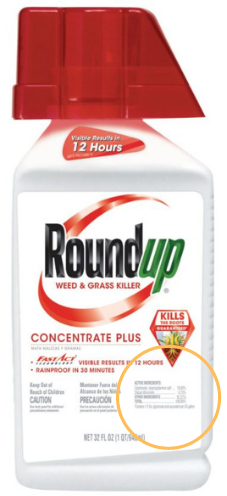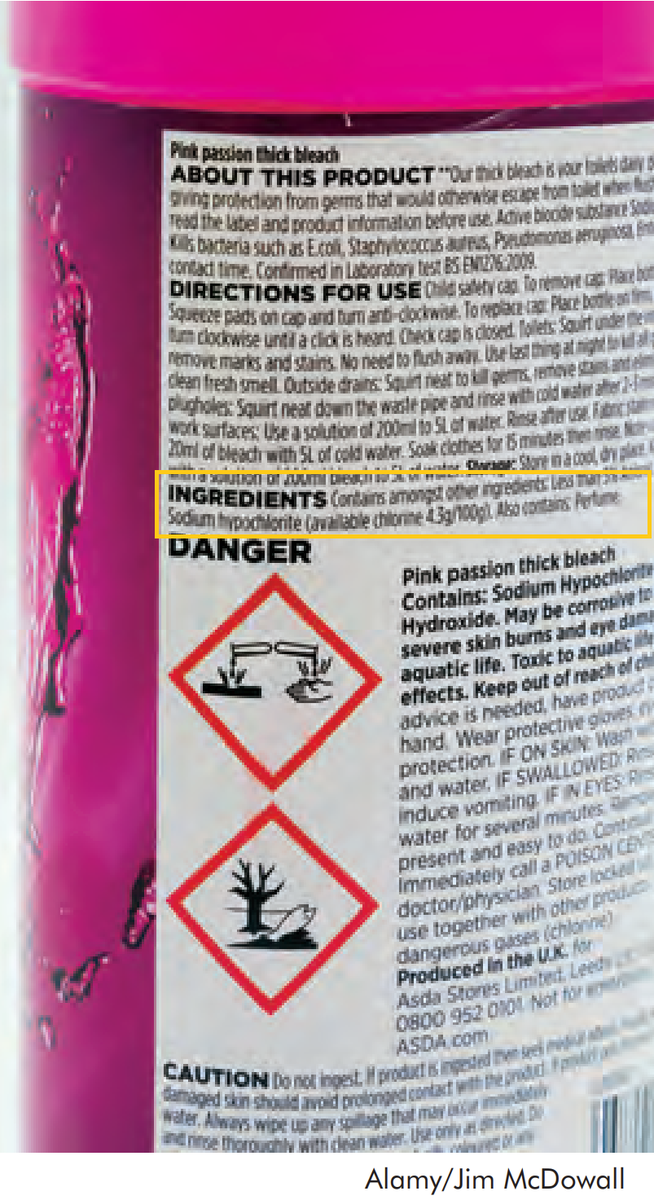Gateway on Pesticide Hazards and Safe Pest Management
How To Find Ingredients in Pesticide Products
Beyond Pesticides offers resources below to evaluate the health and ecological effects of specific chemical exposure from ACTIVE INGREDIENTS in pesticide products, as well as regulatory information and supporting scientific documents. Because various pesticide products can contain more than one active ingredient, it is important to READ the LABEL to determine chemical components.
With 192 different active ingredients and counting, it is essential to establish the connection between the use of these chemicals and their respective hazards.
View the step-by-step guide on how to search for the active ingredient(s) in pesticide products below:
- Go to U.S. EPA's Pesticide Product and Label System and enter the product name. The generic product name may vary.
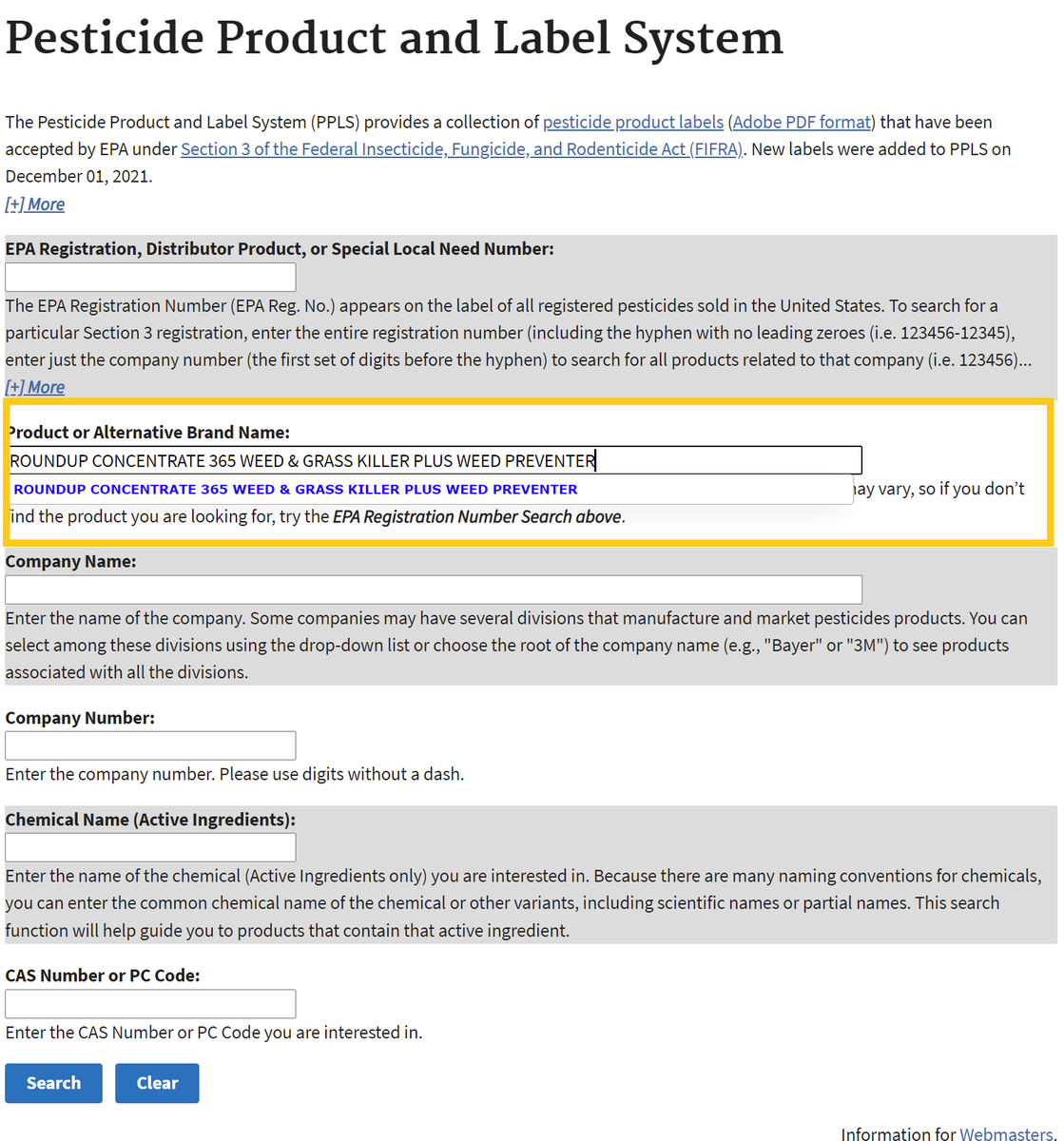
- After searching, click on the chemical ingredients tab or the link for the most recent label to find Active Ingredients.
Chemical List Label List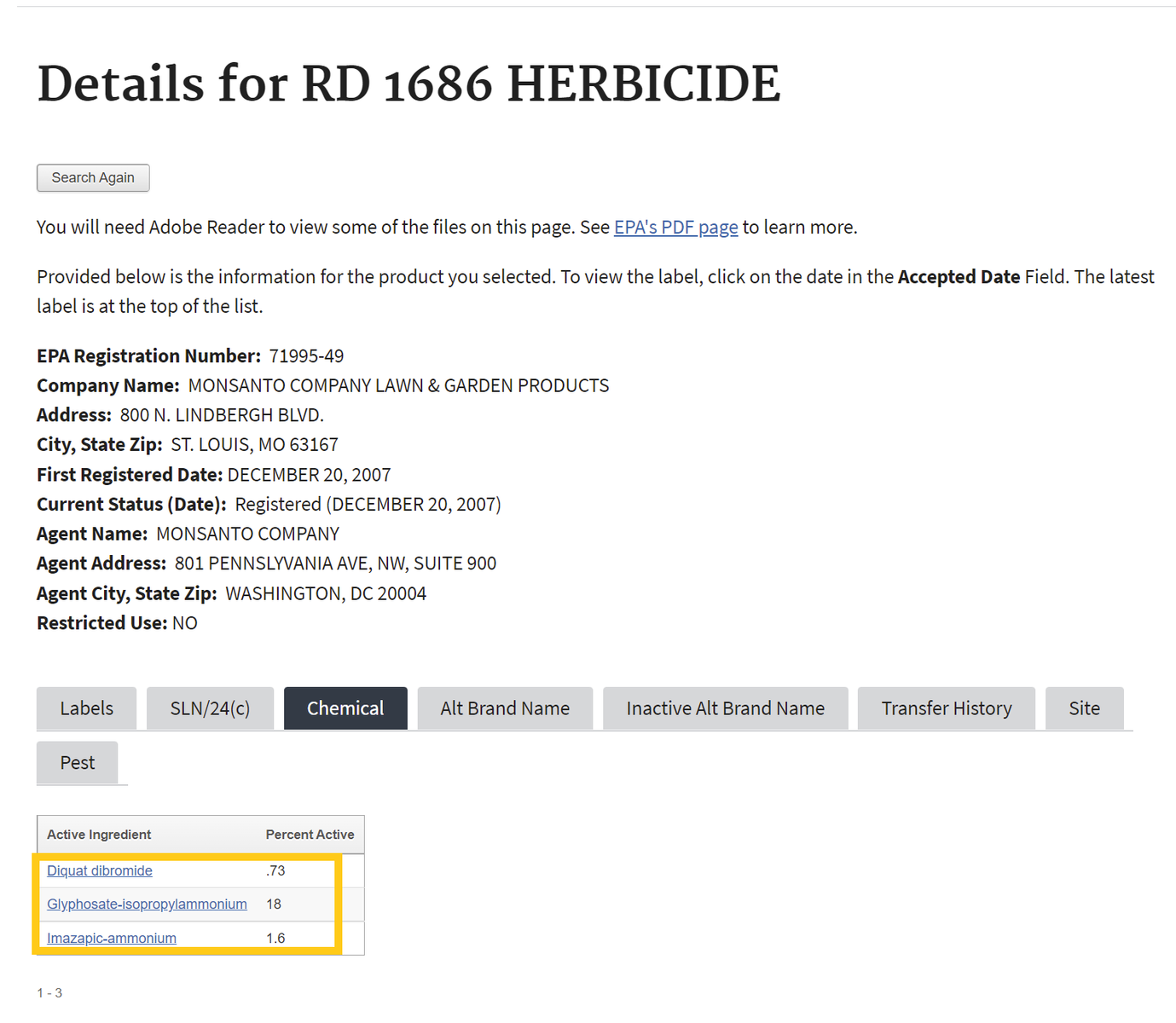
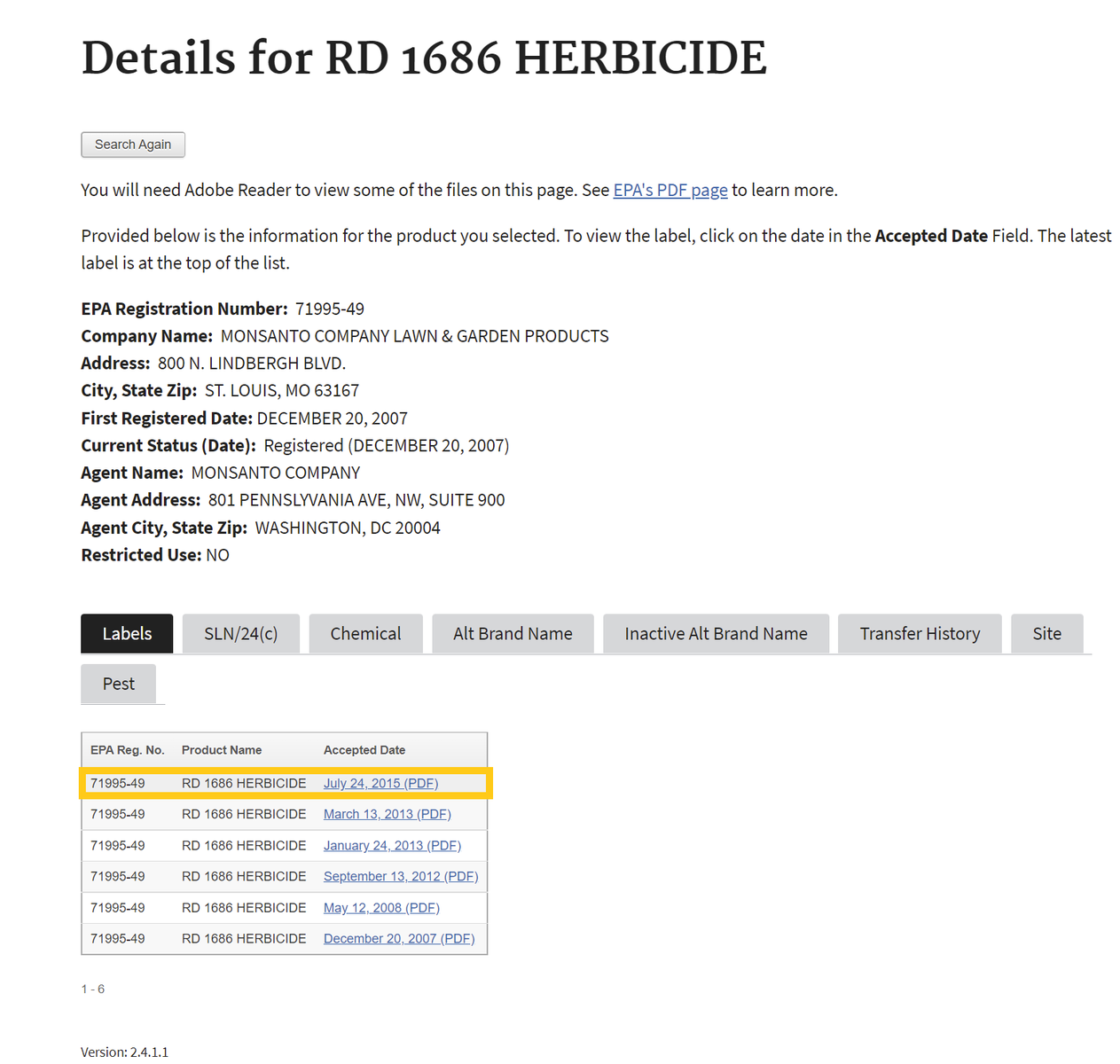
If one selects the chemical ingredients tab, skip to Step 4 . If not, proceed to step number 3 - To find the active ingredient(s) on the label, search for the page in the document containing the date of registration. Usually, the active ingredients section occurs within the first few pages of the label document.
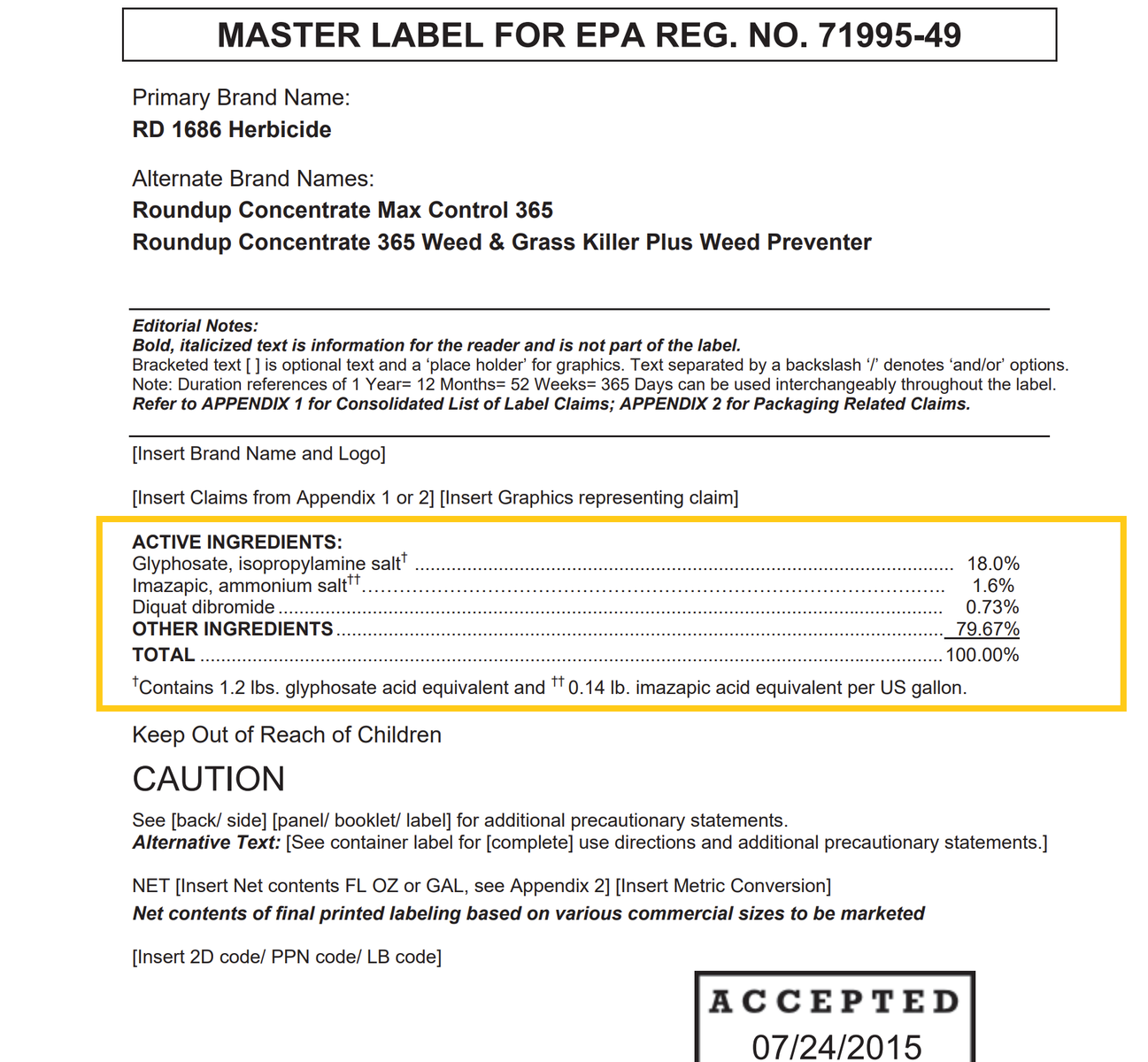
- Return to the Beyond Pesticides Gateway and search for the active ingredient name in the yellow box to the right or from the list below.
Diquat Dibromide
General Information
- Product Names:
- Chemical Class: Bipyridylium herbicide and dessicant
- Uses: Agriculture drainage areas, irrigation systems, carrot (including tops), cucumber, melons, pepper, radish, squash, turnip, potato (white/irish), sorghum, soybeans (unspecified), tomato; lakes/ ponds/ reservoirs, intermittently flooded areas, streams/rivers/channeled water, residentail ornamental ponds and aquaria, lawns, and storage areas; targets algae, bladderwort, crabgrass, elodea, jimsonweed, leafy spurge, naiad, poison ivy, salvinia, shepherdspurse, and waterlettuce.
- Alternatives: Organic agriculture, Organic lawn care
- Beyond Pesticides rating: Toxic
Health and Environmental Effects
- Cancer: Not documented
- Endocrine Disruption: Not documented
- Reproductive Effects: Yes (17)
- Neurotoxicity: Not documented
- Kidney/Liver Damage: Yes (4)
- Sensitizer/ Irritant: Yes (8)
- Birth/Developmental: Not documented
- Detected in Groundwater: Not documented
- Potential Leacher: Not documented
- Toxic to Birds: Yes (4)
- Toxic to Fish/Aquatic Organisms: Yes (8)
- Toxic to Bees: Not documented
Residential Uses as Found in the ManageSafe™ Database
Additional Information
- Regulatory Status:
- Supporting information:
- Daily News Blog entries (Beyond Pesticides)
- Extoxnet Diquat Dibromide Factsheet (Extension Toxicology Network)
- PAN Pesticides Database: Diquat Dibromide (Pesticide Action Network)
- Studies:
- A pesticide and iPSC dopaminergic neuron screen identifies and classifies Parkinson-relevant pesticides. Paul, K.C., Krolewski, R.C., Lucumi Moreno, E., Blank, J., Holton, K.M., Ahfeldt, T., Furlong, M., Yu, Y., Cockburn, M., Thompson, L.K. and Kreymerman, A., 2023. Nature Communications, 14(1), p.2803.
- Pesticide-Induced Inflammation at a Glance. Lopes-Ferreira, M. et al. (2023) ‘Pesticide-induced inflammation at a glance’, Toxics, 11(11), p. 896. doi:10.3390/toxics11110896.
- Imaging Findings and Toxicological Mechanisms of Nervous System Injury Caused by Diquat. Ren, Y., Guo, F. & Wang, L. Imaging Findings and Toxicological Mechanisms of Nervous System Injury Caused by Diquat. Mol Neurobiol 61, 9272–9283 (2024). https://doi.org/10.1007/s12035-024-04172-x
- Effect of Diquat on gut health: molecular mechanisms, toxic effects, and protective strategies. He C, Cai G, Jia Y, Jiang R, Wei X and Tao N (2025) Effect of Diquat on gut health: molecular mechanisms, toxic effects, and protective strategies. Front. Pharmacol. 16:1562182. doi: 10.3389/fphar.2025.1562182
- Single-cell analysis of diquat-induced oxidative stress and its impact on organ-specific toxicity. Chen, Z., Lin, G., Ye, K., Wang, J., Tang, M., Lai, K., Yuan, Y., Lin, S., Dai, X., Chen, H., Ma, H., Zhou, J., & Xu, Y. (2025). Single-cell analysis of diquat-induced oxidative stress and its impact on organ-specific toxicity. Ecotoxicology and environmental safety, 297, 118246. https://doi.org/10.1016/j.ecoenv.2025.118246
- Diquat Induces Cell Death and dopamine Neuron Loss via Reactive Oxygen Species Generation in Caenorhabditis elegans. Wang, B., Yin, Z., Liu, J., Tang, C., Zhang, Y., Wang, L., Li, H., & Luo, Y. (2025). Diquat Induces Cell Death and dopamine Neuron Loss via Reactive Oxygen Species Generation in Caenorhabditis elegans. Environmental science & technology, 59(1), 152–162. https://doi.org/10.1021/acs.est.4c07783
- Diquat exacerbates oxidative stress and neuroinflammation by blocking the autophagic flux of microglia in the hippocampus. Wang, Ping & Song, Cong-Ying & Lu, Xuan & Zhou, Jia-Ning & Lin, Li-Ying & Li, Ting & Zhang, Qin & Lu, Yuan-Qiang. (2024). Diquat exacerbates oxidative stress and neuroinflammation by blocking the autophagic flux of microglia in the hippocampus. Ecotoxicology and environmental safety. 286. 117188. 10.1016/j.ecoenv.2024.117188.








.png)
